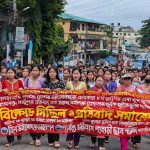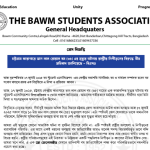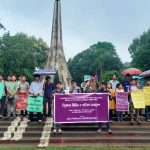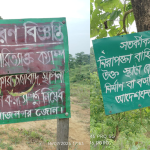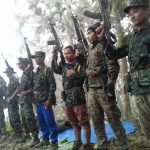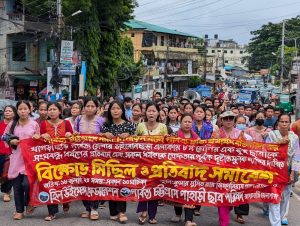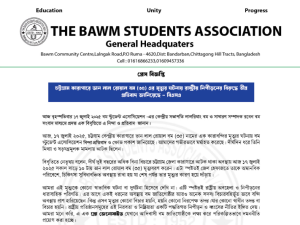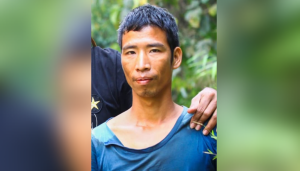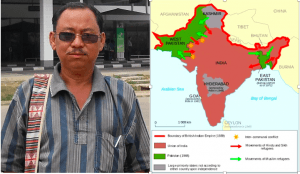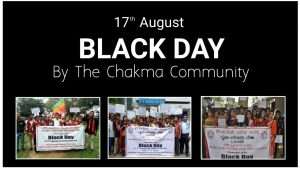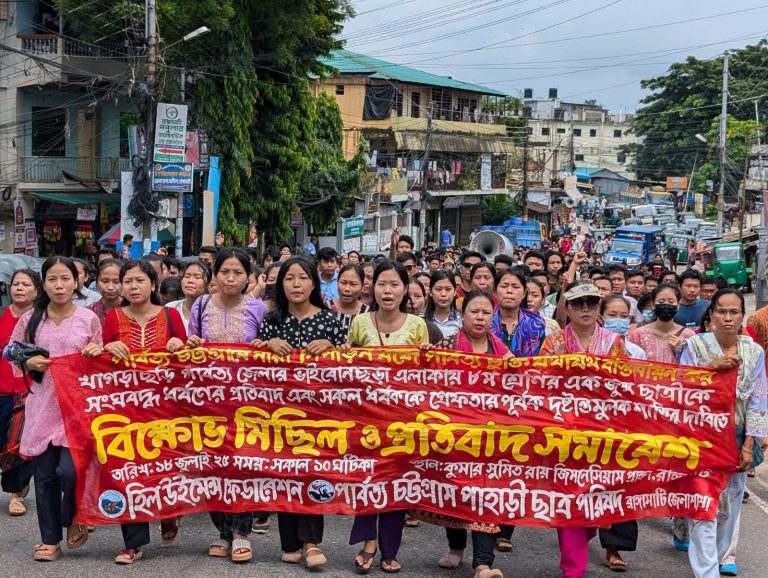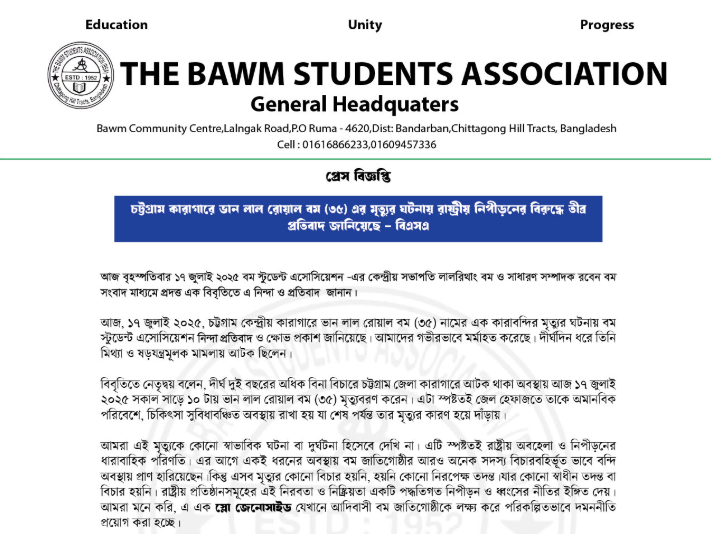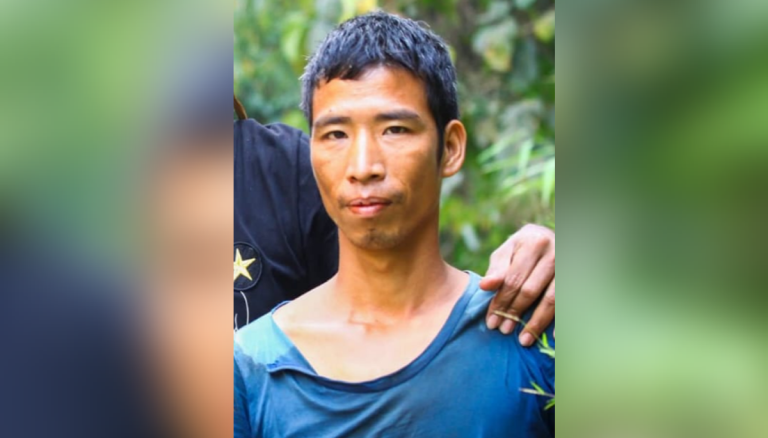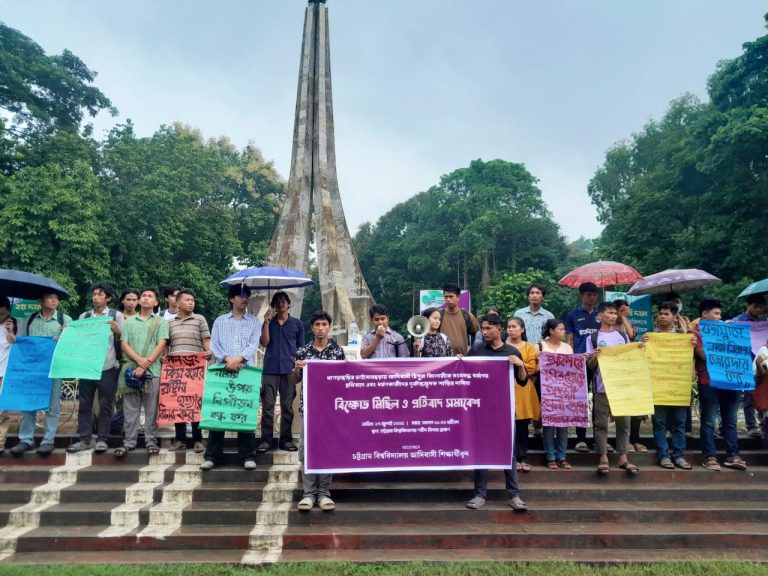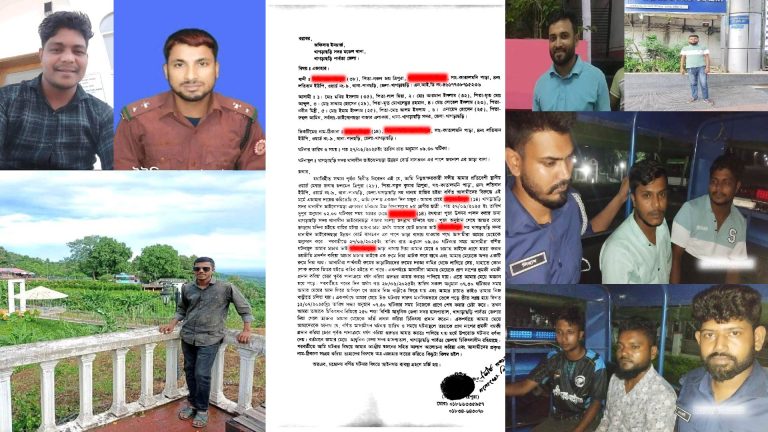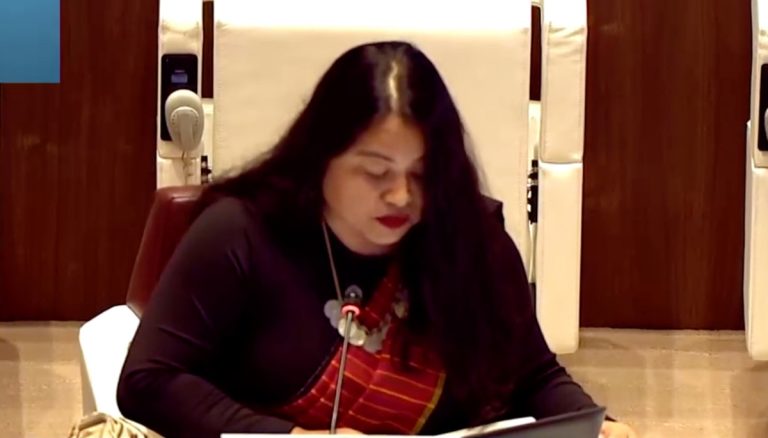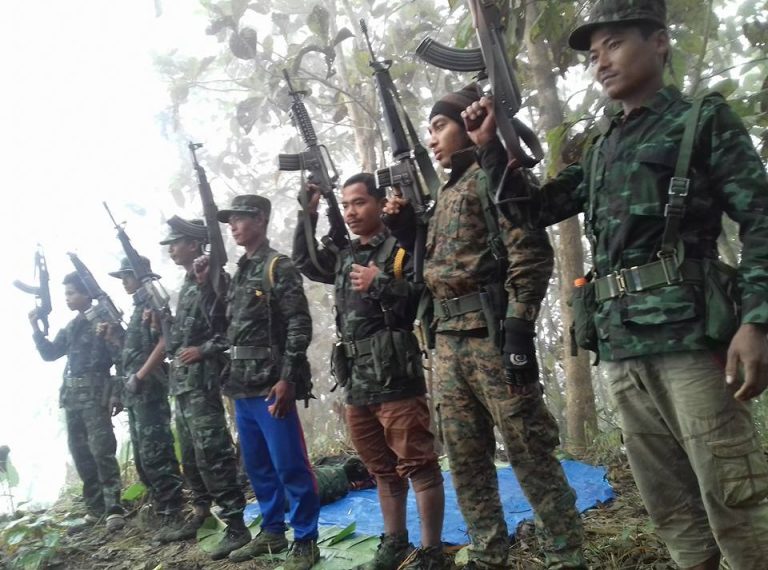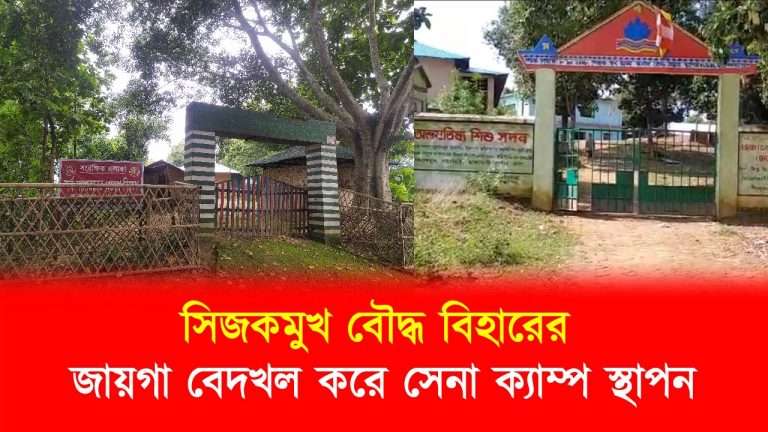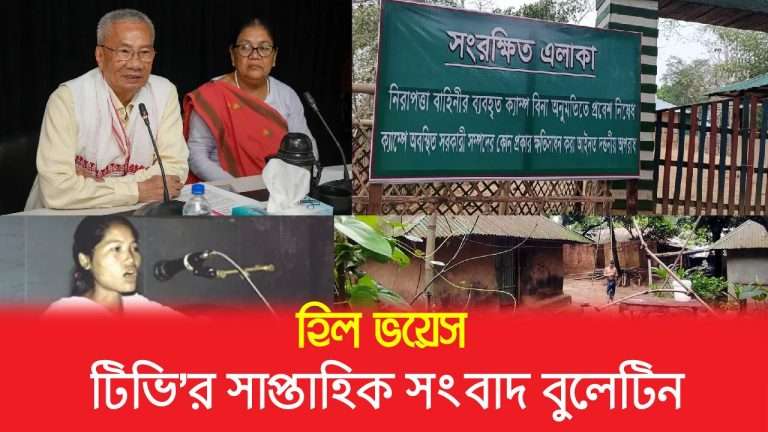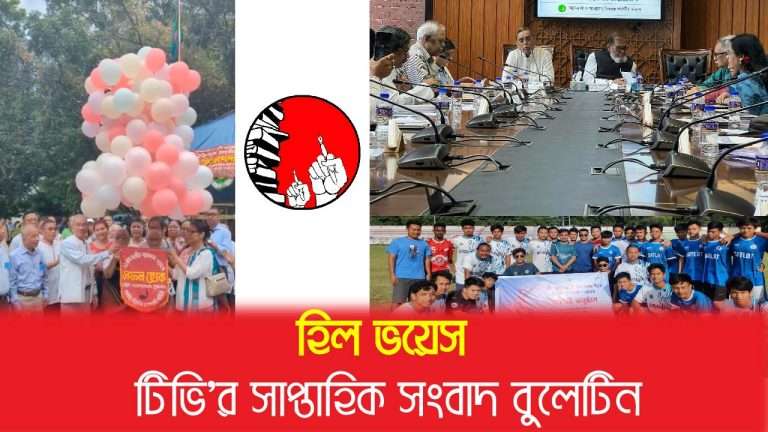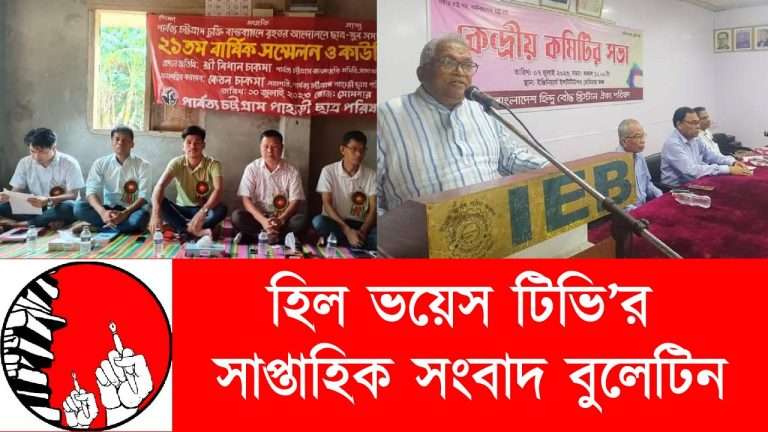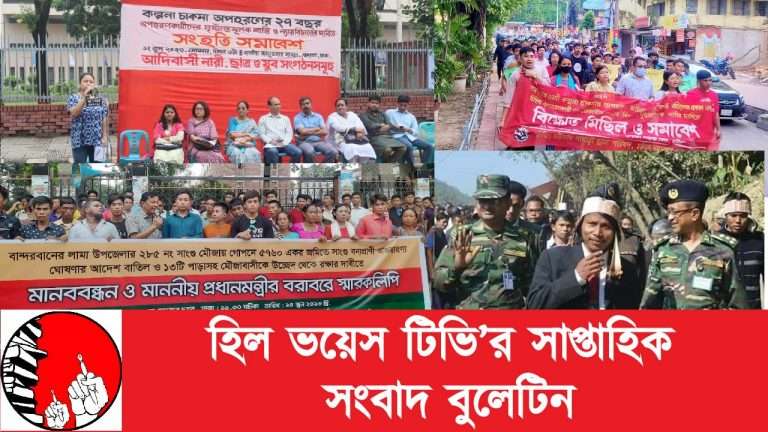প্রধীর তালুকদার
ভারতের প্রথম উপরাষ্ট্রপতি সরদার বল্লব ভাই প্যাটেল সর্বদাই চেয়েছিলেন পার্বত্য চট্টগ্রাম অঞ্চলটি ভারতে অর্ন্তভুক্ত হোক। ১৫ ই আগস্ট ১৯৪৭ সালে পার্বত্য চট্টগ্রামে বৃটিশ শাসনের প্রতিনিধি ডেপুটি কমিশনার জি. এল. হাইড নিজেই ভারতীয় পতাকা উড়িয়েছিলেন রাঙ্গামটিতে। কারণ তিনি জানতেন ভারত বিভাগের শর্ত অনুসারে এই অংশটি ভারতে অর্ন্তভুক্ত হবেই।

অথচ ১৭ই আগস্ট ১৯৪৭, চুড়ান্ত ঘোষণা প্রকাশিত হয় পার্বত্য চট্টগ্রামের পাকিস্তানে অর্ন্তভুক্তির খবর। ভারত বিভক্তি যখন অনিবার্য হয়ে উঠে তখন ১৫ই অগাস্টের ঠিক ৬ মাস আগে, ৪৭ সালের ১৫ই ফেব্রুয়ারি পার্বত্য চট্টগ্রামকে ভারতভুক্তির আবেদন জানিয়ে দিল্লীতে একটি স্মারকলিপি পাঠান হয়। ৩০শে জুন বেঙ্গল বাউন্ডারী কমিশন ঘোষণা করেন গর্ভনর জেনারেল। ১৪ই জুলাই কমিশনকে আরো একটি স্মারকলিপি দেয়া হয়।
১৬ই জুলাই থেকে কমিশনের শুনানী (হেয়ারিংস) শুরু হয়। ১৯শে জুলাই ৯১ মিনিটের মতো পার্বত্য চট্টগ্রাম ইস্যুটি নিয়ে কমিশনের চেয়ারম্যান স্যার সিরিল রেডক্লিফের অনুপস্থিতিতে হেয়ারিংস চলে। ইতিমধ্যে ইন্ডিয়ান ইন্ডিপেনডেন্স এ্যাক্ট-১৯৪৭ প্রকাশিত হয়। দুঃসংবাদ ছড়িয়ে পড়ে যে, বেঙ্গল বাউন্ডারী কমিশনের চেয়ারম্যান স্যার সিরিল রেডক্লিফ কমিশনের দুই অমুসলিম সদস্য জাস্টিস বিজন মুখার্জী ও চারু বিশ্বাসের ৭ পাতার যুক্তিপূর্ণ উপস্থাপনাকে অগ্রাহ্য করে এবং ডেপুটি প্রাইম মিনিস্টার সরদার বল্লবভাই প্যাটেলের দৃষ্টি আকর্ষণী প্রস্তাবনাকে রুষ্টভাবে ডাস্টবিনে ছুড়ে ফেলে দেন। দুর্ভাগ্য যে, হেয়ারিং-এর সময় পার্বত্য চট্টগ্রামের ভারতভুক্তির দাবি মনোযোগ সহকারে বিবেচনা করার মতো এমন কেউ না থাকায় এবং কংগ্রেস ও হিন্দু মহাসভার কোন সদস্য এ বিষয়ে একটি শব্দও উচ্চারণ না করার কারণে অবশেষে বেঙ্গল বাউন্ডারী কমিশনের সিদ্ধান্তের বদৌলতে পার্বত্য চট্টগ্রাম পূর্ব পাকিস্তানে ঢুকে যায়। ফলে পার্বত্য চট্টগ্রাম ও এতদাঞ্চলের নিরীহ অধিবাসীদের ভাগ্য মুসলিম সংখ্যাগরিষ্ঠের পূর্ব পাকিস্থানের শাসনের ঝাঁতাকলে নিমজ্জিত হয়ে যায়।
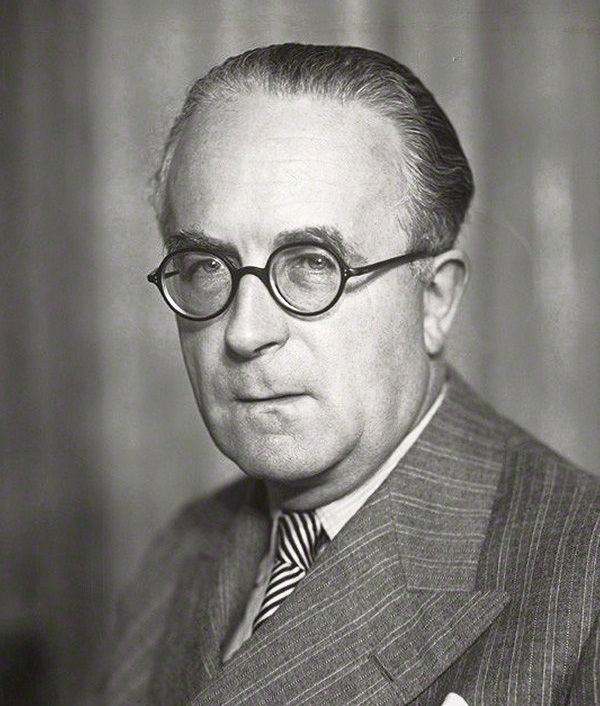
এরপরও পার্বত্যবাসীর প্রতিবাদ থেমে থাকেনি। এরমধ্যে একদিন ভোর সকালে স্নেহ কুমার (এস.কে.) চাকমার সাথে সরদার বল্লব ভাই প্যাটেলের কথা হয়। এস. কে. চাকমা মি. প্যাটেলকে বলেন, “আমি ফিরে যাচ্ছি পার্বত্য চট্টগ্রাম ভারতের ঘোষণা করার জন্য এবং অন্যথায় কিছু হলে তা প্রতিহত করতে। আপনি কি আমার পক্ষ নেবেন স্যার?” উত্তরে সরদার বল্লব ভাই প্যাটেল বলেছিলেন, “নিশ্চয়ই, আমি আপনার সাথেই আছি, পার্বত্য চট্টগ্রামের পক্ষে। চলে যান তাড়াতাড়ি।”
৪ঠা আগস্ট এস. কে. চাকমা ফিরে আসেন রাঙ্গামাটি। ১৯৪৭ সালের ১৪ ও ১৫ আগস্টের মধ্যরাতে এ্যাকশন কমিটি হাজার খানেক সমর্থক নিয়ে ডেপুটি কমিশনার বাঙলোয় হাজির হন। ডি. সি. কর্ণেল জি. এল. হাইড বেরিয়ে এসে তাদের স্বাগত জানান। এস. কে. চাকমা ডেপুটি কমিশনারকে জিজ্ঞাসা করেন, “স্যার, ইজ নট ইন্ডিয়া ইনডেপেনডেন্স নাও?” প্রতি উত্তরে ডি. সি বলেন, হ্যাঁ তোমরা এখন থেকে স্বাধীন।” এস. কে. চাকমা আরো বলেন, “ভারত স্বাধীন আইনে কি পার্বত্য চট্টগ্রাম ভারতের অংশ নয় স্যার?” কমিশনার কর্ণেল জি. এল. হাইড উত্তর দেন, ভারত স্বাধীন আইন ১৯৪৭ অনুসারে পার্বত্য চট্টগ্রাম ভারত শাসনের অধীন।” এস. কে. চাকমা, “স্যার, আমাদের কি জাতীয় পতাকা উড়ানো উচিত নয়?”
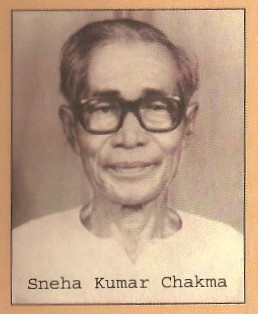
ডেপুটি কমিশনার, “হ্যাঁ, কিন্তু আমরা বৃটিশ নাগরিকরা জাতীয় পতাকা উড়াই সূর্য্য উঠার সময়। অনুগ্রহ করে ভোরে আসুন। ফুটবল খেলার মাঠে জনসমক্ষে ভারতীয় জাতীয় পতাকা উড়িয়ে দিন আর তখন আমি নিজেই স্যালুট করবো। এরপর আমি আমার অফিস ও বাঙলোয় ভারতীয় জাতীয় পতাকা উড়াবো যেখানে আপনাদের সবাইকে উপস্থিত থাকার আমন্ত্রন করি। কাজেই অনুগ্রহ করে আপনারা আমার এই পতাকা উত্তলনের অনুষ্ঠানে যোগ দেবেন।”
স্নেহ কুমার চাকমা তার বয়ানে উল্লেখ করেছেন-স্বনামধন্য নেতা কামিনী মোহন দেওয়ানকে অনেক অনুরোধ করা সত্ত্বেও এই পতাকা উত্তলনে অপারগতা প্রকাশ করায় এ্যাকশন কমিটি তাকে ১৫ই অগাস্ট সকালে ভারতীয় জাতীয় পতাকা উড়ানোর জন্য বাধ্য করে। পরে মিছিল সহকারে ডেপুটি কমিশনারের অফিস ও বাঙলোয় ভারতীয় জাতীয় পতাকা সরকারিভাবে উড়ানো হয়। পতাকা উড়ানোর এই খবর চারিদিকে ছড়িয়ে দেওয়া হয়। যে সময় পার্বত্য চট্টগ্রামের প্রাণকেন্দ্র রাঙ্গামাটি শহরে এই পতাকা উড়ানোর অনুষ্ঠান চলছিল সে সময় পার্বত্য চট্টগ্রাম বিষয়ে দিল্লীতে বি. এন. রাও-এর লেখা রিপোর্ট সরদার প্যাটেলকে পাঠাচ্ছিলেন জওহর লাল নেহেরু।
তৎকালীন ভারতীয় প্রধান মন্ত্রী জওহর লাল নেহেরুর চিঠিটি নিম্নরূপ-
নিউ দিল্লী, ১৫ আগস্ট ১৯৪৭
প্রিয় বল্লবভাই,
পার্বত্য চট্টগ্রাম বিষয়ে একটি নোট পাঠানোর জন্য আমি বি. এন. রাওকে বলেছি। তিনি আমাকে যে ব্যাখ্যাটি দিয়েছেন তা সংযোজিত হলো।
আপনারই,
জওহর লাল
বি. এন. রাও-এর নোটে কি ছিল পার্বত্য চট্টগ্রাম বিষয়ে? আর এই নোটই যত্তোসব কাল হয়ে দাঁড়ালো। ইতিহাসের আস্তাকুড়ে ছুঁড়ে পড়ল এই পার্বত্য অঞ্চলটি পূর্ব পাকিস্থানের অভ্যন্তরে ঢুকে। বি. এন. রাও-এর বয়ানটি সংক্ষেপে নিম্নরূপ-
বাউন্ডারী কমিশনের রিপোর্ট এখনো প্রকাশিত হয়নি। কিন্তু রিপোর্টে বলা হয়েছে যে, পার্বত্য চট্টগ্রাম অঞ্চলটি পূর্ব বাংলায় অন্তর্ভুক্ত করা হয়েছে। এই পরিপ্রেক্ষিতে সংশ্লিষ্ট বিষয়গুলি নিম্নরূপ:-
১) ১৯৪১ সালের সেনসাস অনুসারে ২,৪৭,০০০ জনসংখ্যার মধ্যে কেবল ৭,৩০০ মুসলিম অধ্যুষিত ৫০০০ বর্গমাইলের এই পার্বত্য অঞ্চল। বলা যায় প্রায় ৯৭% জনগণ অমুসলিম।
২) ভারত স্বাধীনতা আইন অনুযায়ী প্রাদেশিক সীমান্ত সম্পর্কিত বর্ণনায় উল্লেখিত রয়েছে যে, এই পার্বত্য অঞ্চলটি পশ্চিম বাংলার মধ্যে পড়েছে। ফলে এই পার্বত্যাঞ্চলটি ভারতীয় শাসনাধীনের অন্তর্ভুক্ত।
৩) ১৯৩৫ সালের আইন অনুসারে এই পার্বত্য অঞ্চলটি একটি শাসন বর্হিঃভূত অঞ্চল (এক্সক্লুডেড এরিয়া)। যার কারণে এই এলাকার অধিবাসীদের বাংলার আইন পরিষদে কোন প্রতিনিধিত্ব নেই এবং বাংলার বিভক্তি নিয়ে তাদের কোন অভিপ্রায় প্রকাশ করার কোন প্রকার সুযোগ নেই।
সুতরাং প্রয়োজনীয় স্বাভাবিক বিচারে সার্বিক বিবেচনায় সর্বোতভাবে অমুসলিম অধ্যুষিত এলাকা হওয়ায় অঞ্চলটি পশ্চিম বাংলার মধ্যে হয়েও চূড়ান্ত পর্যায়ে পূর্ব বাংলায় অন্তর্ভুক্ত করা হয়েছে। সিদ্ধান্তকারী কর্তৃপক্ষের দ্বারা এই অঞ্চলের অধিবাসীদের বক্তব্য সম্পূর্ণভাবে শোনা উচিত।
বি. এন. রাও-এর ব্যাখ্যায় আরো বলা আছে: তবে আপাতভাবে প্রতিয়মান হয় যে, বাউন্ডারী কমিশন নীতিবহির্ভূতভাবে উক্ত সিদ্ধান্ত দিয়েছে। এই প্রেক্ষিতে প্রশ্ন উদ্ভুত হতে পারে এর কোন সমাধান আছে কিনা। পাকিস্থান ভারতীয় স্বাধীনতা আইনের এই তিন শর্তানুসারে পার্বত্য অঞ্চলটি নিজের দাবি করবে তাতে কোন সন্দেহ নেই। ইন্ডিয়াও নীতিগত বিষয় ভঙ্গ করে পার্বত্য অঞ্চলটিকে পূর্ব বাংলায় অন্তর্ভুক্ত করার বিরোধিতা করে দারি করতে পারে। ফলে অঞ্চলটির কার অধীনে চলে যাবে তার সঠিক বিচারের জন্য বিরোধ সৃষ্টি হতে পারে। এক্ষেত্রে ১৯৩০ সালের ইম্পেরিয়াল কনফারেন্স-এর প্রস্তাবিত শর্তও এই বিরোধের সমাধান করতে ব্যর্থ হয়।
এভাবেই কিন্তু বি. এন. রাও কোন পরিস্কার মতামত দিতে পারেননি তার ব্যাখ্যার সারাংশে। কাজেই কংগ্রেস হাই কমান্ডের অবস্থানও পার্বত্য চট্টগ্রাম বিষয়ে আর জোরালো হতে পারেনি। অন্যদিকে পার্বত্য চট্টগ্রামের প্রতিনিধিদের ক্ষেত্রেও নিজেদের মধ্যে সংহতি ও সমন্নয়ের অভাব একটি বড় দুর্ভাগ্য বলা যায়। যুব নেতা কামিনী মোহন দেওয়ান, চাকমা রাজ প্রতিনিধি এবং স্নেহ কুমার চাকমার উদ্যোগের মধ্য ছিল ব্যাপক দূরত্ব। বিভক্ত ও বিচ্ছিন্ন নেতৃত্ব। বোমাঙ সার্কেলের রাজা যেমন কামনা করেছিলেন বার্মায় অন্তর্ভুক্তি, তেমনি ত্রিপুরাদের একাংশও চেয়েছিলেন ত্রিপুরা রাজ্যের সাথে মিশে যাওয়া।
সুতরাং যা হবার তাই হয়ে গেল পার্বত্য চট্টগ্রামের ভাগ্যের আকাশে। পার্বত্য চট্টগ্রামের যুক্তিহীন এই পাকিস্তানে অন্তর্ভুক্তি আজ কেবল বর্তমান বাংলাদেশের জন্য ক্রমাগতভাবে ক্ষতি করে যাচ্ছে তা নয় এই মহান গণতান্ত্রিক ভারতভূমির জন্যও কোনদিন আর্শিবাদ হয়ে উঠেনি। পার্বত্য চট্টগ্রামের নিপীড়িত বঞ্চিত জুম্ম জনগোষ্ঠীর জন্যে এই অন্তর্ভুক্তি একটি নির্মম অভিশাপ তো বটেই।
অবশ্য পন্ডিত নেহেরুও স্বাধীনতার দীর্ঘকাল পর এক জায়গায় উল্লেখ করেছিলেন, ভারতও বাউন্ডারী কমিশনের এওয়ার্ডকে প্রতিবাদ জানিয়েছিলেন। তিনি উল্লেখ করেন, “আমরা আইনগত দিক থেকে ব্যাপারটি গ্রহণ করেছিলাম যেহেতু আমরা প্রতিশ্রুতি দিয়েছি। আমি মনে করি, বাউন্ডারী কমিশনের এওয়ার্ডে বাংলার বেশকিছু অঞ্চল, খুলনা জেলা এবং বিশেষভাবে পার্বত্য চট্টগ্রাম নিয়ে অন্যায় করা হয়েছে।”
যাই হোক ঘটে যাওয়া সেই যুগসন্ধিক্ষণে কোন জাতি বা কোন অংশের ভাগ্যে কি ঘটে গেছে তার হিসেব নিকেশ করে আজ আর হয়তো কোন লাভ নেই। অতীত বরাবরই অতীত। বর্তমান প্রেক্ষাপটে একে শুধরানো হয়তো অসম্ভব। কিন্তু ভবিষ্যতের প্রেক্ষাপটে একেবারেই কি অসম্ভব? তাই আমাদের ইতিহাসকে জানতে হয়, পড়তে হয়। জেনে বা পড়ে ভবিষ্যতের জন্য শিক্ষা নিতে হয়।
